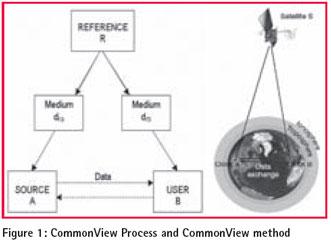| GNSS, TIME | |
Synchronet – an innovative system
|
||||
| A central issue in designing complex networked systems for critical applicative domains is the possibility of keeping each node of the network synchronized with respect to a given system time scale. The problem is even more critical when the synchronization accuracy determines directly the performances of the whole system. In this paper a distributed synchronization infrastructure is proposed providing: • high accuracy synchronization performances (nano and pico seconds) • flexible and scalable service topology (up to global scale) • ease of integration in preexistent infrastructures • ease of customization, both at user level and at system level, in terms of performances and security. IntroductionHigh performance synchronization is a fundamental feature in many applicative domains, in particular it may be directly bounded to: SynchroNet is an innovative system, patented by Thales Alenia Space Italia, that aims to be the sole solution for every application type which needs an highaccurate synchronization covering all levels of performance and coverage requirements with the added value of the ease of integration also in preexistent infrastructures and systems. Therefore, SynchroNet is able to cover, with a complete, flexible and high-performance product, the synchronization needs of a wide range Gnss Based SynchronizationIn metrology, the synchronization of two clocks is the process required to determine the relative behavior of one clock with respect to the other. In particular clock synchronization can be defined as the process required to compute at least two parameters: time offset and time drift. Time offset is the relative, instantaneous, difference between the two time scales (i.e. the phase offset) divergence trend of the two clocks (i.e. the frequency offset). It should be noted that, if the relative behavior of the two clocks is known, they can be considered synchronized even if no physical adjustment is carried out. While synchronizing two co-located clocks could be as easy as measuring 1PPS offsets over time by mean of an accurate Time Interval Counter (TIC), synchronizing several kilometers away clocks with nanosecond accuracy and precision performances |
||||














 (No Ratings Yet)
(No Ratings Yet)





Leave your response!